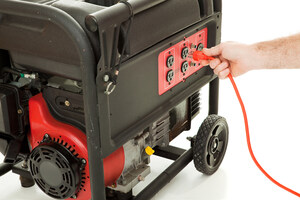Emergency and Severe Weather Preparedness: Do You Have the Right Equipment?
ALEXANDRIA, Va., Jan. 24, 2012 /PRNewswire/ -- This year's winter season may be off to an uneven start, but winter storms and other natural disasters and emergencies can take homeowners by surprise anytime. The Outdoor Power Equipment Institute (OPEI), an association representing outdoor power equipment, utility vehicle and engine manufacturers and suppliers, recommends that homeowners have certain equipment on hand to cope with unexpected weather or public health emergencies.
First aid emergency kits and general preparedness kits for power outages and flu outbreaks are commonplace. But, OPEI's Kris Kiser, President and CEO, recommends that homeowners "make sure they have a basic assortment of outdoor power or utility equipment on hand to stay safe and self-sufficient during an emergency."
The equipment checklist below helps homeowners assess their preparedness for an unexpected weather event or other emergency – and offers some safety tips:
- Pole saws or pruners can help clear away dead or damaged limbs near your home or on your driveway. Make sure you always keep a firm footing on the ground when using such equipment. Do not use a ladder, and stay away from electrical conductors.
- A chain saw can help clear away trees and more massive limbs, but first read and understand the instruction manual and ensure equipment is in good condition. Do not work around power lines, since they can be the biggest threat to safety.
- Power generators can keep the lights on, refrigerators running and water flowing in an emergency. Do not operate power generators, however, in enclosed areas. Carbon monoxide is a colorless, odorless gas that can become concentrated in enclosed areas and cause serious injury or death.
- Snow throwers/snow blowers come in handy for significant snow events and are easier than shoveling for those who have medical conditions. Be sure to read your operator's manual and dress warmly to guard against exposure.
- Chippers and shredders help ease the physical hardship of post-storm cleanup. Keep bystanders, pets, and children at least 75 feet from the machine while it is in operation. Stop the machine if anyone enters the area.
- Utility vehicles may seem like a luxury, but if you are in storm-prone areas of the country, they can be an important piece of equipment to help move branches, haul sandbags or maneuver through areas inaccessible to other vehicles.
Editors' Notes: Consumers may find a list of safety tips for outdoor power equipment at http://www.opei.org/education/safety/. For a gallery of equipment photos, go to http://www.flickr.com/photos/75023139@N03/
About OPEI
The Outdoor Power Equipment Institute (OPEI) is an international trade association representing more than 80 engine and equipment manufacturers worldwide in the utility, forestry, landscape, and lawn and garden industry. OPEI is a recognized Standards Development Organization for the American National Standards Institute (ANSI) and active internationally through the International Standards Organization (ISO) in the development of safety standards. For more information, visit www.OPEI.org.
CONTACTS:
Outdoor Power Equipment Institute (OPEI)
Caroline March-Long
[email protected]
434-295-5938
To view equipment photos, go to http://www.flickr.com/photos/75023139@N03/
SOURCE Outdoor Power Equipment Institute
WANT YOUR COMPANY'S NEWS FEATURED ON PRNEWSWIRE.COM?
Newsrooms &
Influencers
Digital Media
Outlets
Journalists
Opted In





Share this article